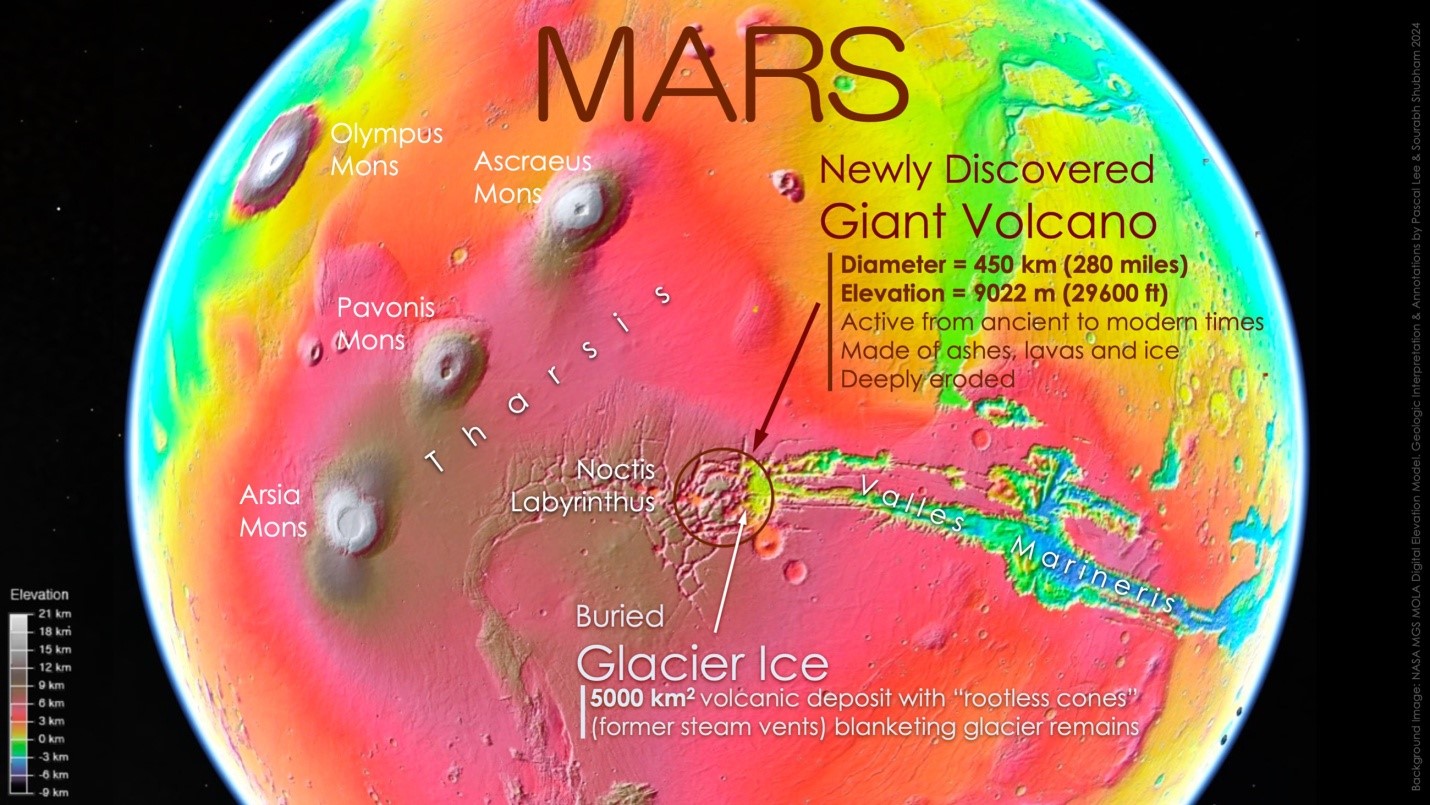Description

Disclaimer: Copyright infringement not intended.
Context
Scientists have discovered the eroded remains of a massive volcano on Mars, that has been active till recent times, with the possible remains of a relict glacier at its base.
Details
Noctis
- The newly discovered giant volcano on Mars is located just south of the planet’s equator, in Eastern Noctis Labyrinthus, west of Valles Marineris, the planet’s vast canyon system.
- The volcano sits on the eastern edge of a broad regional topographic rise called Tharsis, home to three other well-known giant volcanoes: Ascraeus Mons, Pavonis Mons, and Arsia Mons.
- Although more eroded and less high than these giants, the newly discovered volcano rivals the others in diameter, which is about 450 km (280 miles).
- Possible buried glacier ice is also reported under a relatively recent volcanic deposit within the perimeter of the eroded volcano, making the area attractive for the search for life and future robotic and human exploration.
- The central summit of the volcano is marked by a number of elevated mesas form an arc. There is also a caldera remnant, the collapsed volcanic crater of what was once a lava lake. There are signs of pyroclastic deposits and lava flows in several areas within the structure.
- The volcano was discovered during examinations of a relict glacier
- The research has been presented at the 55th Lunar and Planetary Science Conference held in The Woodlands, Texas.
- Scientists were examining the geology of an area where they had found the remains of a glacier in 2023 when they realized they were inside a huge and deeply eroded volcano.

Planet Mars Facts
- Mars – the fourth planet from the Sun – is a dusty, cold, desert world with a very thin atmosphere.
- It is frequently called the "Red Planet" because iron minerals in the Martian dirt oxidize, or rust, causing the surface to look red. It's made of iron, nickel, and sulfur.
- With a radius of 2,106 miles (3,390 kilometers), Mars is about half the size of Earth.
- As Mars orbits the Sun, it completes one rotation every 24.6 hours, which is very similar to one day on Earth (23.9 hours).
- Mars has two small moons, Phobos and Deimos. Phobos, the innermost and larger moon.
- It has a large canyon system called Valles Marineris.
- Mars is home to the largest volcano in the solar system, Olympus Mons. It's three times taller than Earth's Mt. Everest.
- Mars has a thin atmosphere made up mostly of carbon dioxide, nitrogen, and argon gases.
- The temperature on Mars can be as high as 70 degrees Fahrenheit (20 degrees Celsius) or as low as about -225 degrees Fahrenheit (-153 degrees Celsius). And because the atmosphere is so thin, heat from the Sun easily escapes this planet.
|
PRACTICE QUESTION
Olympus Mons a volcano located on which of the following planet in the solar system?
- Earth
- Mars
- Jupiter
- Uranus
Answer B
|











